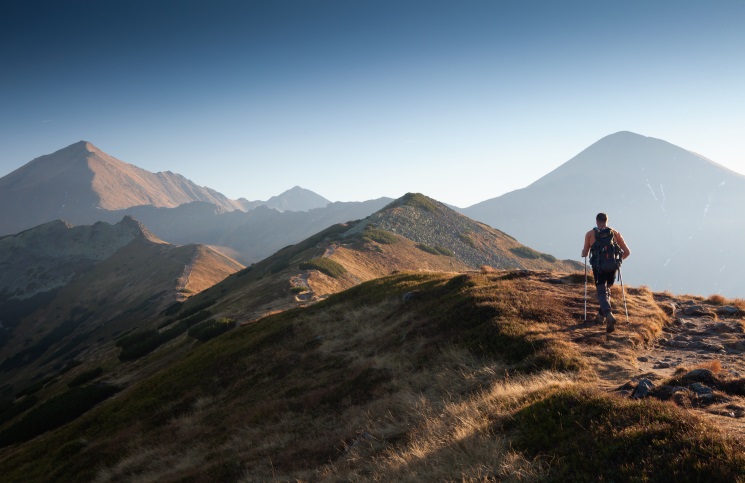Early man had to hike everywhere he wanted to go.
Before horses, wagons, cars, trains, and airplanes, the only mode of travel was the two legs we were born with and a desire to get from A to B; to see what lay beyond the horizon and find undiscovered lands.
Nowadays, we have it much easier. Modern transportation gets us where we’re going, whereas hiking allows us to take in sights and experiences not available to us from inside a car, train, or airplane.
Hiking is a great way to get out and get some exercise and much-needed fresh air. However, there are a number of factors to consider before you venture out on your first outing.
Temperature fluctuations:
Prepare for the worst. Even a sudden onset rainstorm can come out of nowhere in the middle of the summer months, causing you to succumb to the elements unnecessarily.
Leave extra room in your pack for a sweater, toque (fall, spring), water-repellent pullover or rain jacket, and lightweight zip-off pants (if wearing shorts.) Pack some gloves if you’re hiking late or early season.
Footwear:
Footwear is very terrain dependant. But for the most part, you can’t go wrong with a quality pair of hiking boots, preferably with a composite sole to protect against punctures which can quickly put the brakes on your hike (best-case scenario), or leave you stranded in the wilderness unable to walk (at the worst).
Pack an extra pair of socks always and change them if your feet get overly sweaty, to prevent blisters from creeping up on you.
Regional Animals (ie., danger):
If you’re native to the surrounding area you’ll be hiking, this (hopefully) won’t be an issue. If you’re visiting an area or just plain never ventured outdoors before, you better know what dangerous wild animals and insects you’ll be encountering and how to avoid them if possible.
You have no business hiking otherwise. Seasons will also play a big role on how dangerous animals can be. Hiking along the Yukon river during spring salmon season is a great way to tempt a deadly grizzly or black bear attack. Hiking in remote northern Canada during moose during the fall rutting season is an even easier way to get yourself killed!
Other Environmental Variables:
Poison ivy, poison oak, sumac, mudslides, sand storms, flash floods, etc. All of these and many more variables are very real threats to your comfort, health, and potentially your life! If you are in a new area you’re not familiar with, ask someone who knows the region well about environmental concerns you need to be aware of. Or hire a local guide.
Navigation:

No long hike should be absent of basic navigation equipment. A GPS is really nice, use it if you got it. However, a map of the area (that you know how to read) and a compass (that you know how to use) are equally essential if traveling in a strange area, even an area you’re familiar with.
Trees, fields, lakes – can all overwhelm and play tricks on the mind and pull you way off course, regardless of how many times you’ve hiked an area. Navigation gear is doubly essential if you’re not hiking an established trail system such as remote parts of the Appalachian in the US, or off-the-beaten path sections of the GR Footpath in Europe that stretch out for thousands of square miles.
Emergency Gear:
Emergency gear is an oft-forgotten essential in any long distance hiking adventure. A basic first aid kit containing some bandages, medical tape, scissors, knife, and disinfectant are all that’s often needed.
However, plan your kit based on the area you’re traveling, the amount of time you’ll be there, and who you’re with. For instance, if you have a friend who’s deathly allergic to bees, it might be prudent for both of you to have individual access to an epi pen in your individual emergency kits.
Other good ideas include After-Bite, alcohol swabs, a splint-making kit, medical dressing material, fire making materials, a hunting knife, and anti-inflammatories.
Last: Have an Emergency Rescue Plan
You should never be hiking long distance by yourself, as common sense should dictate. Regardless whether you’re alone or part of a team, everyone present should have a charged cell phone in case of emergency. A sat phone is a really smart idea if you’re going to a super-remote area with questionable reception.
Last, make sure someone else knows where you’re going and your day-to-day itinerary. A check-in/rescue plan should be made in advance, based on them not hearing from you at a set time or day.




